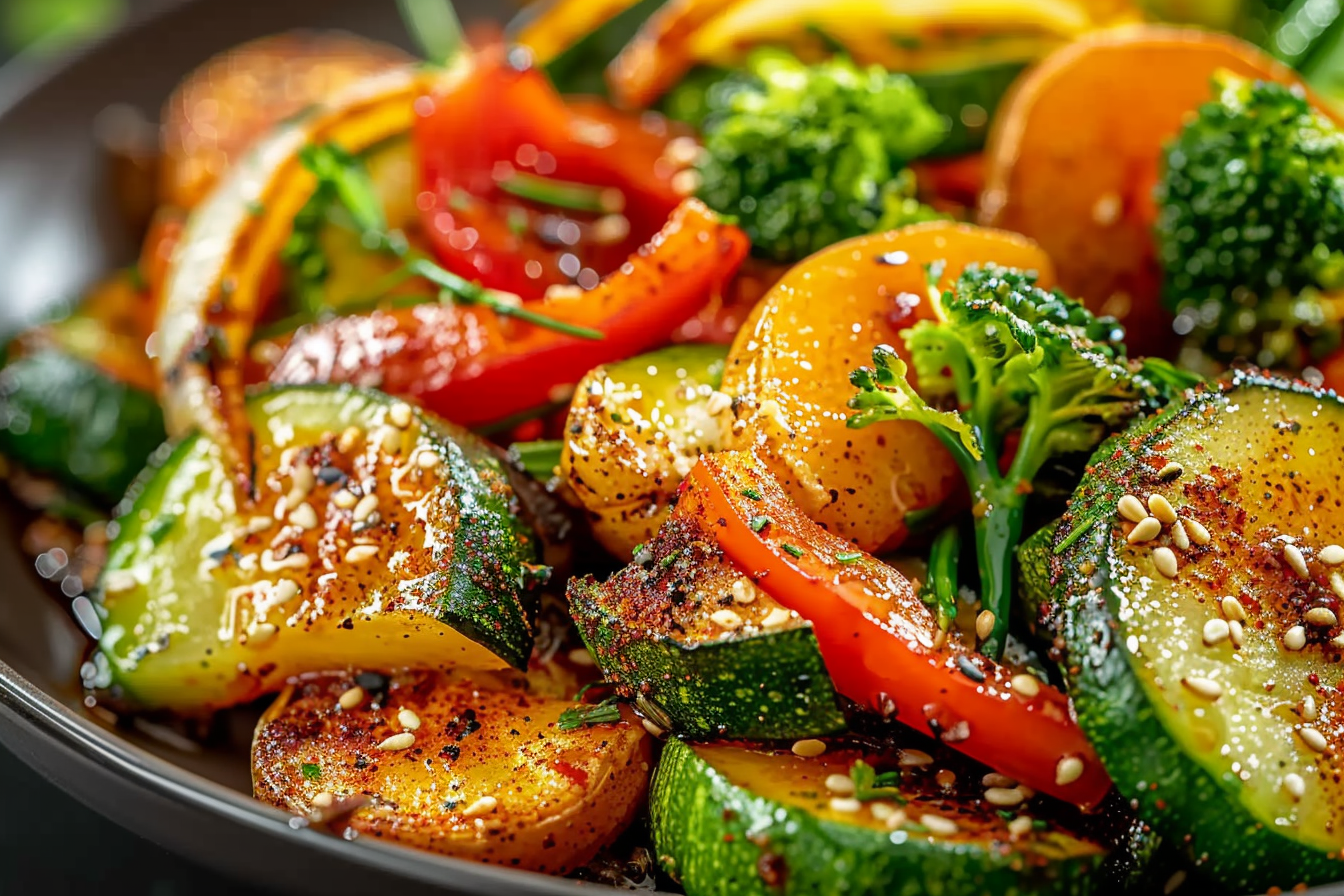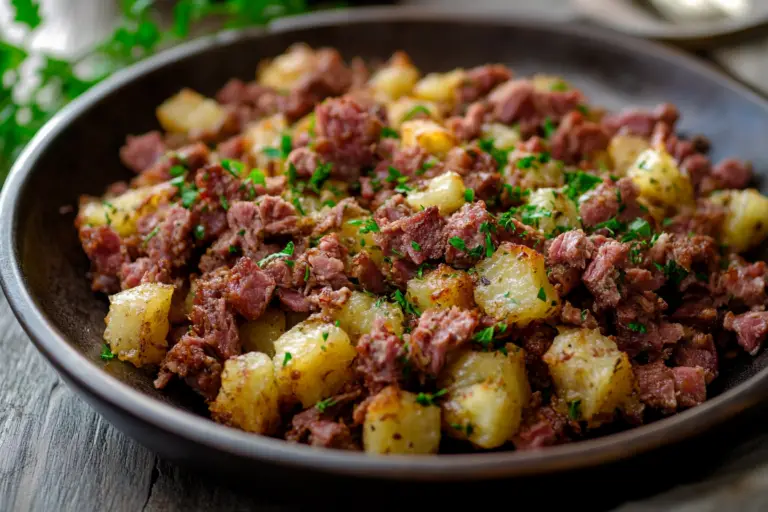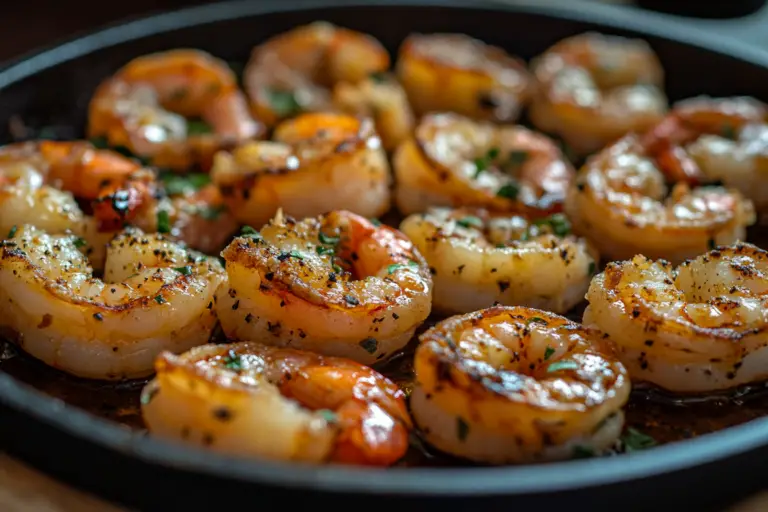Hibachi Vegetables
If you’re craving a dish that’s full of flavor, easy to make, and brings a little taste of the hibachi grill right to your kitchen, then look no further! These Hibachi Vegetables are a game-changer. With just a few simple ingredients and a little love, you’ll have a dish that’s perfect for any occasion. Trust me, you’re going to love how these veggies come together with that signature savory-sweet sauce that will have everyone asking for seconds!
Why You’ll Love Hibachi Vegetables
This recipe isn’t just about the ingredients; it’s about creating moments. Whether you’re making a quick weeknight dinner, hosting a cozy get-together, or serving up something healthy and delicious on the side, Hibachi Vegetables are the way to go. Here’s why it’s a favorite:
Versatile:
These veggies can pair with just about anything. Serve them alongside grilled chicken, tofu, or a bowl of rice—it’s the perfect side or main course!
Budget-Friendly:
No fancy ingredients required! Hibachi Vegetables use everyday veggies that are easy to find and budget-friendly.
Quick and Easy:
Ready in under 30 minutes, this recipe gives you more time to relax and enjoy your meal than you’ll spend preparing it.
Customizable:
You can mix and match your favorite veggies—think zucchini, bell peppers, onions, and mushrooms—or get creative with whatever you have on hand!
Crowd-Pleasing:
This dish is guaranteed to impress. It’s always a hit, whether you’re cooking for your family or hosting a dinner party. The perfect blend of flavors is hard to resist.
Ingredients
Hibachi Vegetables are made with simple ingredients, but they come together for a delicious, savory meal. Here’s what you’ll need:
- Zucchini: Fresh, crisp, and slightly sweet, zucchini makes a great base for this dish.
- Bell Peppers: Colorful and full of flavor, bell peppers add a little sweetness and a pop of color.
- Onions: A savory element that balances out the sweetness of the peppers and zucchini.
- Mushrooms: These earthy, umami-packed gems bring depth and richness to the dish.
- Soy Sauce: A must for that classic hibachi flavor.
- Garlic: Fresh garlic gives these veggies a nice aromatic kick.
- Sesame Oil: A little drizzle of sesame oil gives the veggies a nutty, smoky undertone.
- Butter: Adds richness and a silky texture to the vegetables.
- Black Pepper: A little seasoning to enhance all the flavors.
(Note: The full ingredients list, including measurements, is provided in the recipe card directly below.)

Instructions
Let’s dive into the steps to create this flavorful masterpiece:
Preheat Your Equipment:
Start by heating a large skillet or wok over medium-high heat. You want it nice and hot so the veggies get a good sear.
Combine Ingredients:
Chop your veggies—zucchini, bell peppers, onions, and mushrooms—into bite-sized pieces. In a small bowl, mix together the soy sauce, sesame oil, and garlic.
Prepare Your Cooking Vessel:
Add a tablespoon of butter to the skillet and let it melt until it starts to bubble. This will give your veggies that delicious buttery flavor.
Assemble the Dish:
Toss your chopped veggies into the hot skillet and stir them around to coat them in the butter. Pour the soy sauce mixture over the veggies and stir to combine, ensuring everything is coated evenly.
Cook to Perfection:
Let the veggies cook for about 10-15 minutes, stirring occasionally. You want them tender with a little char on the edges for that perfect hibachi grill flavor.
Finishing Touches:
Sprinkle a pinch of black pepper over the top and give it one last stir. Remove from heat and let it rest for a couple of minutes to allow the flavors to settle in.
Serve and Enjoy:
Serve these Hibachi Vegetables warm as a side dish, or toss them with some rice for a full meal. They’re so tasty, you’ll want to make them again and again!
Nutrition Facts:
- Servings: 4
- Calories per serving: 150
(Note: The full nutritional breakdown is available in the recipe card.)
Preparation Time
- Prep Time: 10 minutes
- Cook Time: 15 minutes
- Total Time: 25 minutes
How to Serve Hibachi Vegetables
This dish pairs wonderfully with a variety of sides and accompaniments. Here are a few serving suggestions to enhance your dining experience:
- Serve with Rice: These veggies are perfect over a bed of steamed jasmine rice, brown rice, or fried rice for a complete meal.
- Add Protein: Pair them with grilled chicken, shrimp, or tofu to add protein to the dish.
- Top with Sesame Seeds: For an added crunch, sprinkle some toasted sesame seeds on top just before serving.
Additional Tips
Here are some extra tips to help you get the most out of this recipe:
- Add More Veggies: Feel free to add other veggies like broccoli, carrots, or snow peas for extra color and flavor.
- Make It Spicy: If you like a little heat, toss in some red pepper flakes or a dash of sriracha to the soy sauce mixture.
- Perfect for Meal Prep: These Hibachi Vegetables are great for meal prep. Store leftovers in an airtight container in the fridge for up to 3 days.
FAQ’s
- Can I use different vegetables?
Yes! You can swap in your favorite vegetables—broccoli, carrots, or asparagus all work wonderfully in this dish. - Can I make these Hibachi Vegetables vegan?
Absolutely! Just use vegan butter or olive oil instead of regular butter, and you’re good to go. - Can I use a grill instead of a skillet?
Yes! If you have a grill pan, you can get a great sear and smoky flavor just like you would on a hibachi grill. - Can I add protein to this recipe?
Yes! These vegetables are a great base for grilled chicken, shrimp, or tofu. - What type of soy sauce should I use?
You can use either light soy sauce or tamari for a gluten-free option. Both work great! - Can I add garlic powder instead of fresh garlic?
Yes, you can substitute garlic powder for fresh garlic, but fresh garlic adds the best flavor. - What’s the best way to store leftovers?
Store any leftover vegetables in an airtight container in the fridge for up to 3 days. - How can I make this dish spicier?
Add red pepper flakes or a splash of sriracha to the sauce for an extra kick. - Can I use olive oil instead of sesame oil?
While sesame oil gives that authentic flavor, you can substitute olive oil if you don’t have sesame oil on hand. - Can I make these vegetables ahead of time?
You can prep the veggies and sauce ahead of time. Just cook them right before serving for the best texture and flavor.
Conclusion
These Hibachi Vegetables are the perfect blend of savory, smoky, and slightly sweet—exactly what you need to brighten up any meal. Whether you’re enjoying them as a side dish or as a meal on their own, they’ll quickly become a go-to favorite in your recipe collection. So what are you waiting for? Get cooking and enjoy the flavors of hibachi right at home!
PrintHibachi Vegetables
Hibachi Vegetables are a simple, delicious, and healthy side dish made with a mix of colorful vegetables like zucchini, onions, mushrooms, and peppers, cooked on a high heat, similar to the hibachi style used in Japanese restaurants. The vegetables are sautéed with garlic and soy sauce for a savory and flavorful dish that pairs well with rice or grilled meats.
- Prep Time: 10min
- Cook Time: 10min
- Total Time: 20min
- Yield: 4 servings
- Category: Side Dish
- Method: Sautéing
- Cuisine: Japanese
- Diet: Vegan
Ingredients
– 1 medium zucchini, sliced
– 1 medium bell pepper, sliced
– 1 small onion, sliced
– 1 cup mushrooms, sliced
– 2 tbsp vegetable oil
– 2 cloves garlic, minced
– 2 tbsp soy sauce
– 1 tbsp sesame oil
– Salt and pepper to taste
Instructions
1. Heat vegetable oil in a large skillet or wok over medium-high heat.
2. Add the zucchini, bell pepper, onion, and mushrooms to the skillet.
3. Sauté the vegetables for about 5-7 minutes until they start to soften and develop a bit of color.
4. Add minced garlic and cook for another minute until fragrant.
5. Pour in the soy sauce and sesame oil, and toss everything to coat evenly.
6. Season with salt and pepper to taste and cook for another 2-3 minutes.
7. Serve immediately as a side dish.
Notes
– You can customize the vegetables based on your preference, such as adding broccoli or carrots.
– For a vegan version, ensure the soy sauce used is plant-based.
– The sesame oil adds a rich flavor, but you can substitute with olive oil if preferred.
Nutrition
- Serving Size: 1 serving
- Calories: 120kcal
- Sugar: 6g
- Sodium: 380mg
- Fat: 9g
- Saturated Fat: 1g
- Unsaturated Fat: 7g
- Trans Fat: 0g
- Carbohydrates: 12g
- Fiber: 3g
- Protein: 2g
- Cholesterol: 0mg







